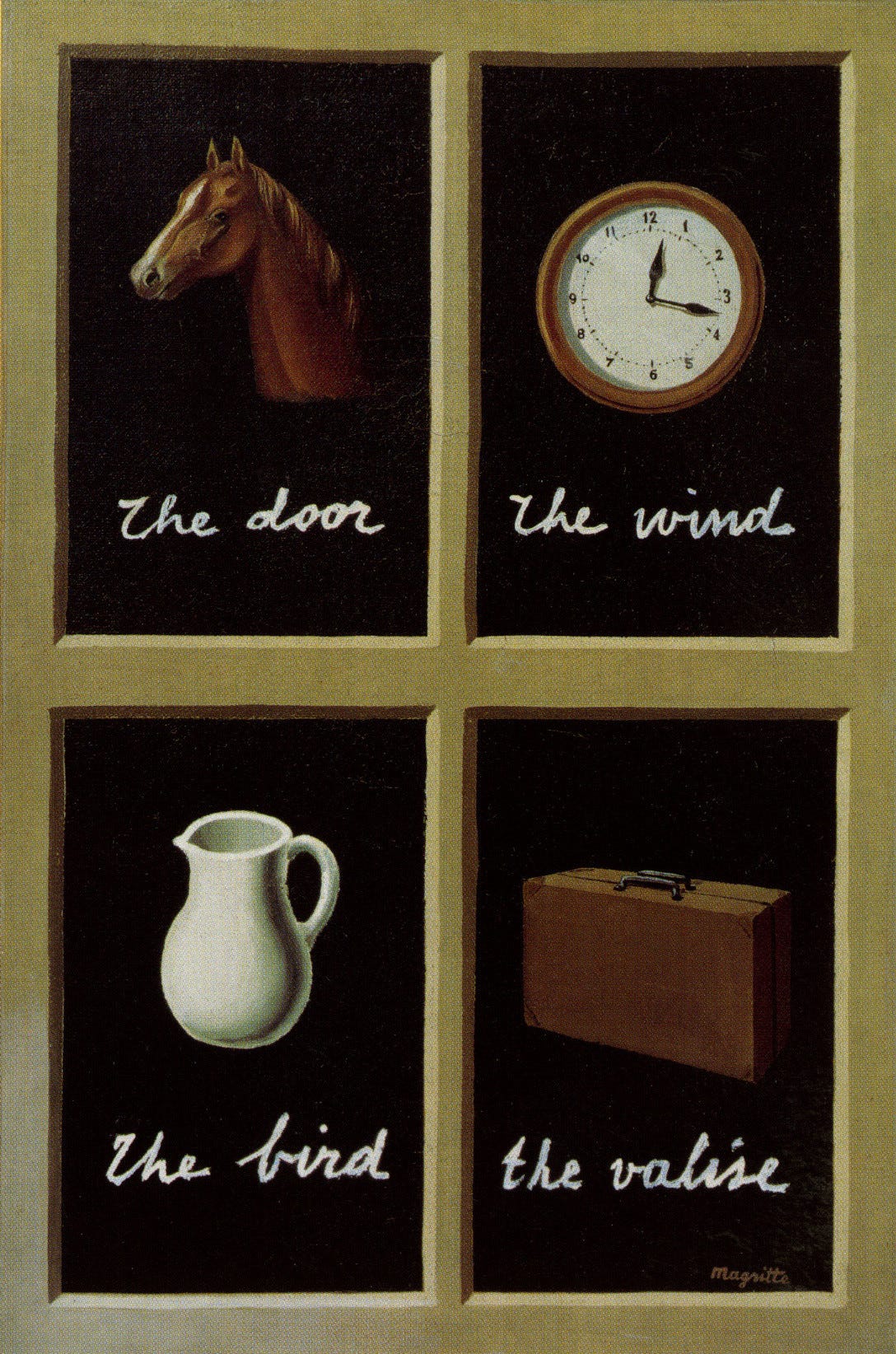When writing, look at what you are trying to describe more than at your words
9 reflections
“The Key to Dreams”, René Magritte, 1930
1.
When drawing from real life, the trick is to spend more time looking at the thing you are trying to capture than at your drawing. This is true for writing, too.
2.
When I was in my early twenties, I tried to write poems like Tomas Tranströmer. I did close readings of all his collections and reverse-engineered what he was doing. But no matter how hard I tried, every poem I wrote was dead on the page. I couldn’t figure out what was wrong.
At some point during this time, I saw an interview with Tranströmer from the early 1980s where the reporter asked how he came up with his poem, “The Open Window.” In the poem, a man is shaving by an open window in the bathroom on the second floor when the razor turns into a helicopter and flies out low across the summer. Tranströmer thought for a bit, then answered that he had the idea for the poem one morning when he was shaving by the open window in the bathroom on the second floor and got the feeling that the purr of his razor was that of a helicopter, and—looking out through the window—felt like he was flying out across the summer.
I remember thinking that this was a funny way to avoid talking about what his poem meant and where it came from, which he disliked doing. But now I think what Tranströmer said was a genuine attempt to explain where his poetry came from. Good writing isn’t about studying how great essays or poems look and then figuring out how to reverse engineer that (though that’s part of it). Rather, it’s about learning how to pay close attention to your thoughts and feelings and the concrete materiality of the world, and mastering the craft so you can translate what you see onto the page. My poems failed because I was looking at the paper, not at the thing I was trying to capture.


